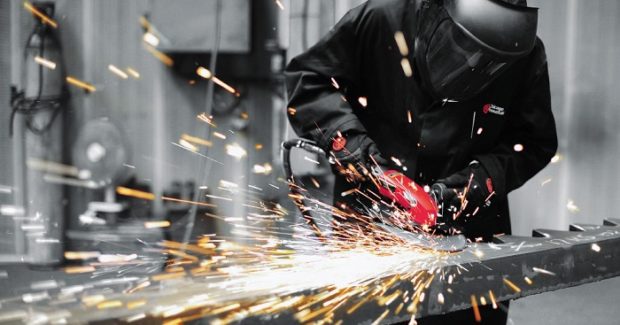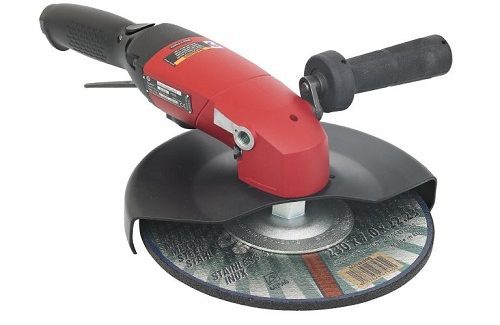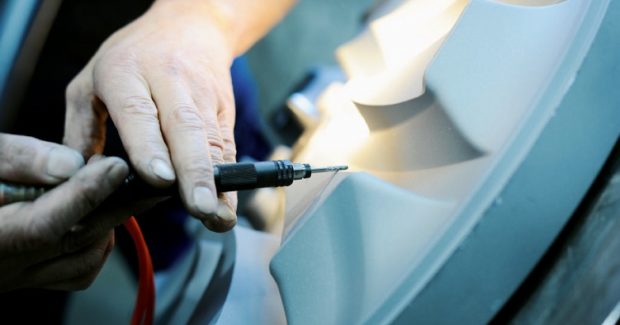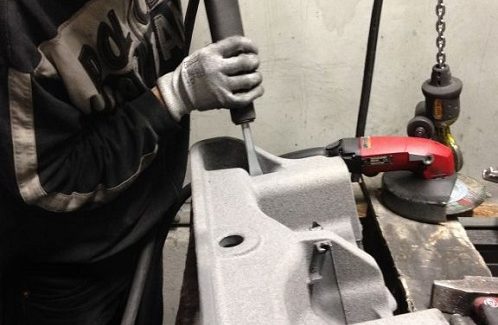How to Increase Material Removal Efficiency and Your Bottom Line
From foundries to fabrication shops and final finishing, all areas of metalworking are looking to increase profitability through process efficiencies. Pneumatic tools that are appropriate for material removal can enable users to improve their productivity significantly. Here is a review of the latest air tools and how they are best suited to particular applications, along with considerations to take when specifying tools.
Posted: January 11, 2018
Material removal is an integral part of the restoration process that determines the overall quality of a finished product. One of the major challenges in material removal is how to increase productivity through reduced downtime and increased yield. Whether the material being removed involves cutting gates, runners and deburring in a complex shape casting, removing rust or paint, or finishing large flat surfaces in oil and gas work, it is important to have the right tool for the job. Tools that can withstand the harsh environments and rigors of the job and are reliable and durable will get the job done more quickly and efficiently.
FINDING THE RIGHT TOOL FOR THE FOUNDRY
Once a mold has been set, the cores, gates, sprues, runners, risers and burrs left behind by the casting process must be removed. Angle and die grinders are the principle tools for this fettling process and their use varies depending on the amount of material that must be removed. For larger removal areas, angle grinders are ideal tools to use with 4 in, 5 in, 7 in and 9 in abrasive wheels, Type 1 or Type 27, as well as flap wheels or sanding pads. Look for powerful pneumatic angle grinders that offer 2.8 hp in both 7 in and 9 in abrasive wheel capacities and are capable of 2,000 hours of continuous service before maintenance.
For difficult-to-reach areas where angle grinders are too large, die grinders used with carbide burrs and mounted points are more suitable. Typically used for more refined fettling and work inside casts and molds, die grinders can be equipped with different types of carbide burrs that offer maximum removal rates on aluminum or ferrous metals. In addition to carbide burrs used for fettling, die grinders can also be fitted with sanding pads and polishing flap wheels for finishing purposes. Lightweight, ergonomic die grinders provide users with greater control and maneuverability. Look for die grinders that are built to withstand 1,000 working hours before maintenance is required, and offer between 0.4 hp and 0.7 hp with speeds from 15,000 rpm to 30,000 rpm to cover all material removal applications.
MATERIAL REMOVAL IN FABRICATION
Angle and die grinders, together with chipping hammers and scalers, are used to both clean weld seals and finish components that have been forged. To remove the build-up of unwanted burrs or raised edges, chipping hammers and scalers are the ideal tools for the job. Suitable for surface clean-up jobs, needle scalers provide a series of percussive needles designed to easily lift off rust, paint and other coatings. Owing to the nature of the tool, hand-arm vibrations (HAV) must be taken into account. HAV can have negative effects on the body if using tools for a long time, and because of this, it is important to find a tool with low vibration to ensure safety and reduce the risk of worker injury. Look for chipping hammers that provide low vibration through insulated grips and a unique air cushion vibration damping system while providing substantial power in order to remove stubborn materials and coatings. Some can achieve levels of vibrations as low as 1.7 m/s² on a pistol needle scaler to limit operator exposure.
For larger surface areas and the removal of thicker materials, chipping hammers are necessary to achieve the desired result. Owing to the vibrations that are given off by chipping hammers, they should be cushioned to safeguard against HAV and risk to the user. For polishing and finishing, sanders are ideal for helping adjust the final shape of the product and also returning a worn product back to its original sheen. For areas requiring precise sanding as well as an abrasive surface, belt sanders are ideal for the job thanks to their narrow sanding strip and easy maneuverability. Orbital sanders are better for larger areas thanks to large, circular sanding pads, typically used on flat surfaces. When specifying a sander, it is important to adapt its speed to the abrasive material, which can vary from 6,000 rpm to 12,000 rpm in order to obtain the desired finish. Once the final sanding has been complete, polishing finishers can be used to provide a final aesthetic touch.
With such an extensive range of tools on the market, it can be difficult to know where to start when specifying. When selecting the tools for the job, the following factors should be taken into account:
- Safety is paramount. Protecting the operator is an absolute priority, so it is essential to consider the safety features of the tool and the tests it has gone through to ensure it provides maximum safety levels during operation. For example, choosing angle grinders that have protective guards and that are proven to withstand the force should the grinding wheel burst are essential for guaranteeing the safety of the workforce. Also, check how the tool complies with CE, ISO standards and national standards. To maintain the maximum level of safety, the speed of a grinder should never exceed the maximum operating speed indicated on the abrasive. For instance, an 8,500 rpm 7 in grinding wheel cannot be used on a 12 000 rpm grinder.
- Power-to-weight ratio. How powerful does the tool need to be for the application? More powerful tools often tend to be heavier, which can be more difficult for users to operate. However, there are now newly designed tools that deliver excellent power-to-weight ratios, meaning that they provide high performance but are easier to use. Operators can hold the tool for longer periods of time without excessive strain to get the job done in a quicker and more qualitative way.
- Durability. What is the environment like that the tool will operate in? Ensuring that the tool is capable of withstanding a tough environment is essential to reducing downtime – and pneumatic tools typically have a higher durability compared with electric tools. Consider what tests the tools have undergone to ensure durability. Drop tests and other extensive testing mean that operators can be confident the tools will continue to deliver high performance even in arduous conditions. Also, how long will the tool last before it needs routine maintenance? A tool that can last longer between service intervals will be more cost effective to run.
- Ergonomics. How comfortable and easy are the tools to handle and use? How long are the tools expected to be used for at any given time and what are the vibration levels like? Tools that have been designed with the operator in mind will undoubtedly offer higher levels of comfort. Well-balanced tools with composite handles that provide minimum strain to the user mean operators will be able to complete the job with more ease. Note that angle grinders benefit from a low profile that maintains a good operator visibility on the abrasive and operation. Furthermore, some tools feature adjustable side handles that can be tilted in order to fit every operators’ preference.
- Functionality. What level of functionality is needed to complete the job effectively? For example, is an entry-level tool needed or one that is more sophisticated? Cost is a major decision factor in tool choice, so do not over-specify a tool if a simple one is required. If more complicated or specialist jobs must be completed, invest in a higher performing tool that can do the job right the first time. Also, consider the cost over the lifetime of the tools, rather than simply the initial purchase cost, in addition to the cost of the complete air system – this is another area where efficiencies and increased productivity can be made. Choosing high-end material removal tools that can increase the amount of material being removed per minute ultimately improves productivity. Their return on investment can be calculated by multiplying this gain by the amount of time worked in one year. Their durability increases productivity even more through the reduced downtime for maintenance.
Only by fully understanding the applications and requirements from the tools can operators make well-informed decisions on the right tool for the application to help increase the amount of material being removed, their productivity, and ultimately the bottom line.















